Artist Interviews 2022
Reisig and Taylor 
By Laura Siebold
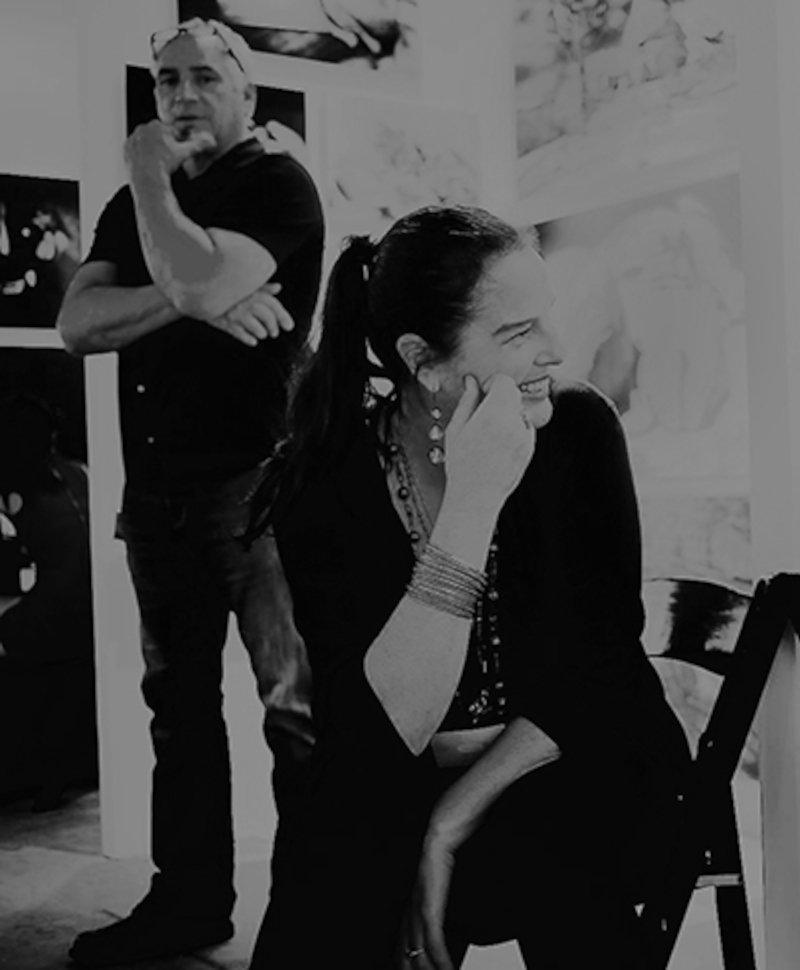
Chris Reisig (CR) and Leeza Taylor (LT) have been a team for over 25 years. Their lenticular images transform an object into multiple replications, giving the medium an artistic representation that transcends its playfulness. In their interview, the two artists answer our questions together or separately, representing the dual nature of their images in language.
The reader will learn about the use of light and shadows in lenticular work, the creation of “an alternative reality of our experiences in an artistic format”, and reflections of Pop Art culture in society. Reisig and Taylor’s work has developed from their passion for photography; so, we get deeper insights into lenticular imagery as an extension of photography. That includes the specific use of the camera in creating a photograph that can later be digitally transformed into a 3D image. Keep your eyes out for the future endeavors of the artist couple, and their open call to invite other artists to their gallery Reisig and Taylor Contemporary, in Los Angeles, CA.
{Below we have used our initials at the beginning of paragraphs to indicate where either one of us, or the other, is responding. We have also indicated where both of us are responding at the same time.}
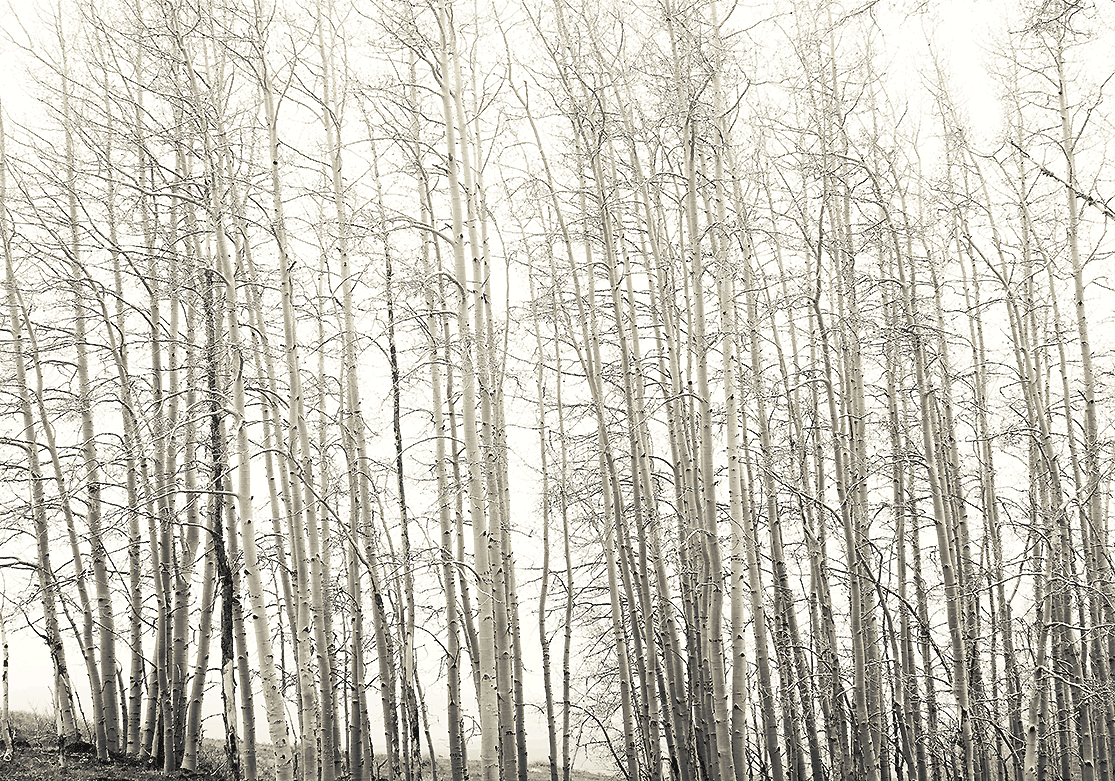
Leeza and Chris – I am so happy we finally get to do this interview. I saw your work exhibited multiple times at The Other Art Fair; your lenticular artwork really caught my eye. In your opinion - what is the main benefit of digital art creation over classical paintings?
CR: Digital is another tool. Lenticular is a difficult, restrictive medium. And, historically, it has been used for a lot of kitschy purposes. But we embrace all of this. It is our task to push lenticular to its absolute limits while retaining the nostalgia of this uniquely modern medium as it enters the contemporary moment. What is most powerful about lenticular is this ability to bring these two places together; that is, the rapturous and the everyday.
This is what makes our work Pop Art beyond its subject matter.
For lenticular, the digital aspect has its benefits in making the process more accessible, and more malleable. The computer makes ideas endlessly alterable, and printing infinitely repeatable. How to do something with an object, how to continue doing something to an object—how to capture an object between versions of itself. These are the questions we are interested in when working with lenticular. As painter Jasper Johns famously said: “Take an object. Do something to it. Do something else to it.”
LT: There isn’t necessarily a benefit, just an alternative way to encompass and re-charge our canon of work over the years. We still continue to re-introduce non-digital painting and film photography into our digitally assembled artworks. This is really important for us —the digital is a way of extending and translating between all the different mediums in which we work. We have discovered lenticular art as an invigorating intermediary through which we are able to revisit our images from the past (and re-represent them). In the past, lenticular has been on the fringe, or at least in the toy aisle, and was probably not ever intended to be artistic beyond a kind of playfulness. It’s our goal to move the medium beyond its humble beginnings.
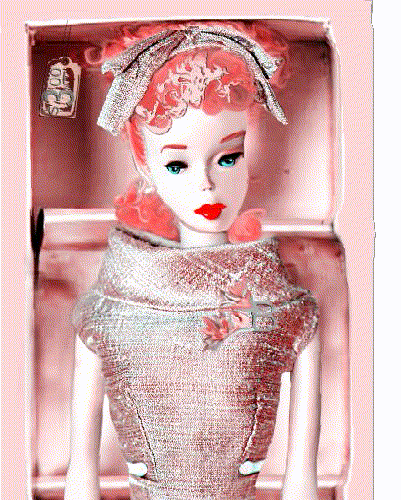
Your body of work features many different influences, ranging from paintings, Pop Art images, over celebrity portrait photography to digital lenticular art and NFTs. How would you characterize your style?
LT + CR: Our style is always changing; however, there seems to be a thread that viewers say is always distinctly REISIG AND TAYLOR. We love to re-interpret our work between new genres and new inspirations, such as Pop Art. Pop Art is more immediate and “in-your-face.” It feels like it moves fast, and we need to keep up. 25 years ago, we probably would not have thought we would ever move into the realm of Pop Art, until we realized that our work had already arrived there of its own accord. Having begun by working between commercial projects and our self-generated works, we recognized that art directors and creative interests want artists to fit into categories for the sake of identifying who they are (and marketing what they do). Practically, this is understandable —"fit the artist with the project.” The thing is, we didn’t see the usual generic distinctions in our own way of working. All of our different works are latent in one another, precipitating in their interactions. By covering as much as possible in different ways, we found a way to maintain a relation to the boundaries between genres and mediums, while not forfeiting our own fluidity and flexibility in moving between seemingly distant positions.

In lenticular art, part of the image always stays unseen and hidden until the viewer changes positions. How do you choose which images and photographs to blend, and which role do shadows and reflections play in these images?
LT + CR: We are so busy visually and emotionally. In the background of our minds, it seems art is influencing everything. Something is always caught on that sticky fly-paper background.
The lenticular surface itself stretches and scatters—it changes the light, transmitting and reflecting. At times, it even looks as if it is lit from behind. Many effects are only created by a photographic lens. (For example, lens flare used creatively can make an image breathe.)
Shadows are places that can be opened up, even without light. For our purposes shadows become gossamer, transparently showing obscured parts of the image happening behind the shadow. Entirely different realms can replace the one initially entered, living in a shadow dimension. We have always enjoyed happy accidents of light. Like a catchlight brings life to eyes, an eye catching a diamond makes it sparkle.
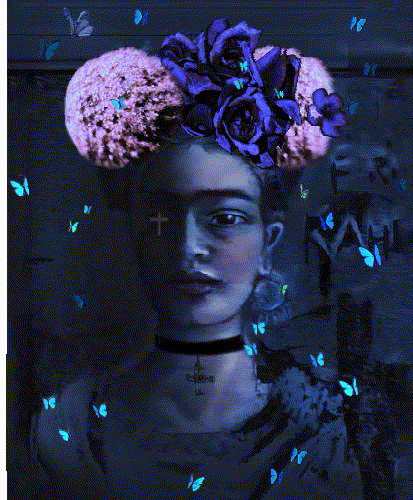
In your opinion – which role has Pop Art played in history and how much has it influenced you as artists?
LT: Andy Warhol and Man Ray have been an inspiration in that they have always used their friends, family, and immediate surroundings as a launchpad for their art. We do the same. We intimately photograph our friends and family and use these images as starting points.
We combine all of this to create an alternative reality of our experiences in an artistic format.
CR: Rock and Roll, Hip Hop, drugs, revolution, sex, freedom, capitalism, consumerism…. We were born into popular culture and Pop Art permeates our collective consciousness.
Lenticular itself is a Pop Art product or phenomenon: Cracker Jack prizes, religious images, magazines, posters. Art is trying to express life. Or at least some (other) form of it. Pop art is a staunch reflection of western culture. And a necessary supplement to all its contradictions. It is such a directly powerful mode of representation that it has become an expression of itself expressing itself, like standing between two mirrors becoming one continuous aisle of endless reflections of tomato soup cans and comic books…. The popular is the relevant—if we see a reflection of ourselves in our daily lives, we have to recognize Pop Art’s ubiquity and influence on our collective soul.
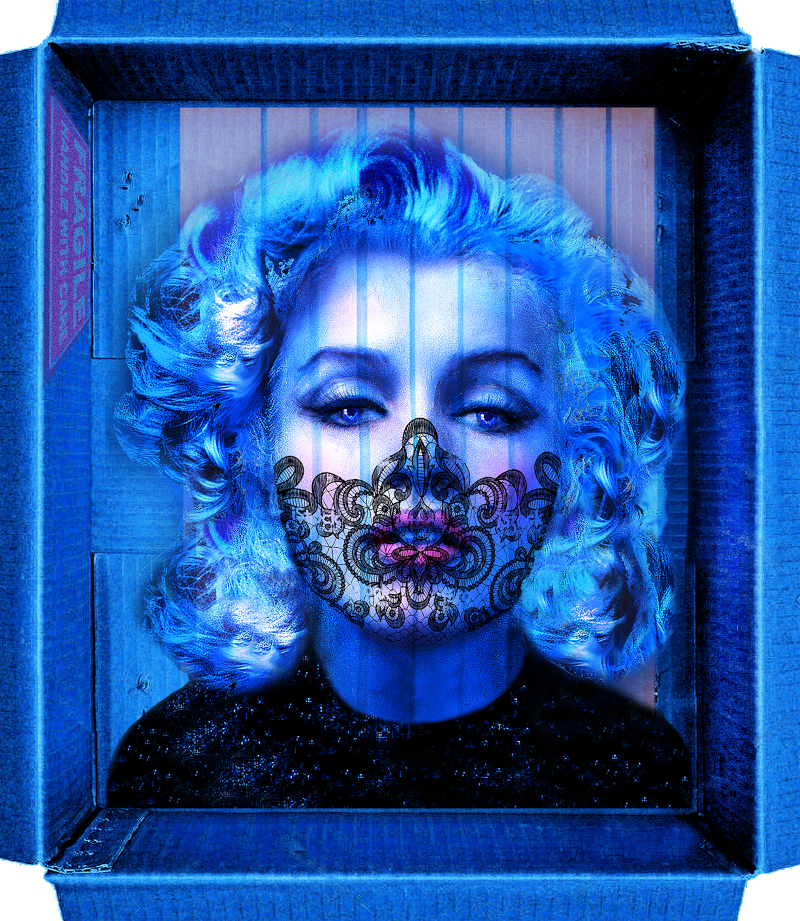
Your website defines your work as follows: “With the unique capacity to interrogate and break down the normative barriers between intimacy and estrangement, anonymity and celebrity, sexuality and conviviality, the force of the aperture as a way of cutting through such dualistic entanglements emerges as the central strand carried throughout their body of work.” How do you capture the duality of life in your art?
LT: We photograph friends and family in very intimate situations. Something familiar becomes something strange. The duality emerges in re-positioning these momentary images against the continual stream of life, as it is actually lived. Something becomes coherent where before it was impossible to see.
CR: Here are two ways to look at it (diagrammatically):
In other words, standing before a lenticular is stepping into the place between dualities:
lenticular is the line in the center of the box diagram. And despite its elementary attitude, the Venn diagram is perhaps even more to the point insofar as the center region—
between the two circles—is called the lens. The lenticular (lens) is in the place of this (logical) lens; it is the vanishing point of entangled dualities.
But is not necessarily representing these dualities beyond this line or point that comes between them. If someone were to cross-over from the center into either
region on either side of the middle, a dualistic flipping occurs between “here” and “there.” Our lenticular works perform a similar action; however, it also retains
a constant depth between this variable flickering (which is why we think it is best to consider it as the line or lens in these analogies and diagrams). All this is to say that there is a third position hiding in the appearance of dualities.
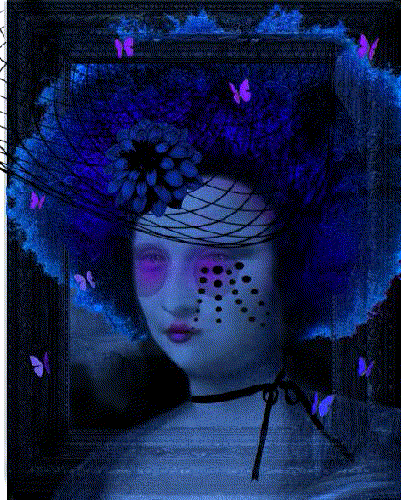
Which has been the most unique project you’ve done in your career so far and why?
LT + CR: Lenticular as a whole, in all its dimensions, is probably the most unique project we have undertaken so far. There is so much to explore. The in-camera work of actually capturing a scene in such a way that it can be reconstructed as a 3D image, is particularly unique to the lenticular medium (taking multiple images of a subject from slightly different perspectives). And it also seems to strike upon some kind of singularity when working across mediums like non-digital painting and film photography through an ultimately digital technique. Between disjoint methods we digitally manipulate a myriad of subjects that end up melding together in the final lenticular form.

Which has been the most difficult medium to work with over the span of your 25+ years career?
LT+ CR: It has to be lenticular. If we weren’t involved with lenticular, the transition from film to digital may have been an evolution that left us in the dark. As photographers working in film, this transition happened very quickly and we had to adapt. So we did.
Without digital we would never have considered lenticular.
We never gave lenticular any thought until we met someone who was heavily involved and had a long history with lenticular and wanted to share. (For this, we thank our lenticular mentor, friend and artist, Meredith Day.)
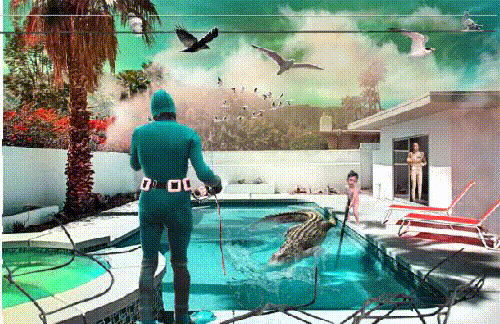
Reflecting on your engagement with art, can you recall a specific experience that reassured you to continue your path as an artistic couple?
LT + CR: There is certainly a specific force or joie de vivre. During our second date, we realized that we really enjoy simply being together. Instead of going out to dinner, we magically spent the evening creating polaroid images. It turns out that our second date produced some of our favorite collaborative imagery to this day.
We were both assisting other photographers and it was difficult to find time for our own work. We decided to put a portfolio together using our unique personal contrasts and shared aesthetic. We loved the complementary results. Since then, our business kept evolving and we were able to adapt our mutual efforts and labor. Now, our interest and efforts producing lenticular art again combines our sensibilities. We found what we are good at and what we do well together still. To be in love and to create something together is really the same thing for us.
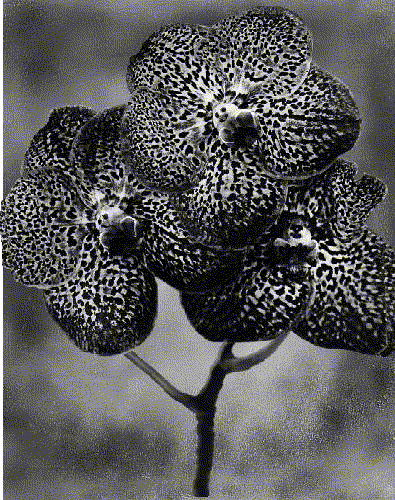
We are curious about future projects – what are you currently working on?
LT + CR: We are looking at the underlying structure of our lenticular work, opening up the lenticular onion. Otherwise, we are working and continuing to get our work out there. Currently, we have both photography and lenticular works in galleries throughout the United States. But we always need to be at the next step, anticipating the impossible. In general, we want to engage with the public through our art. Art needs to be shared, and there are many ways artists can help themselves be seen while also supporting other artists.
Since we have seen some success while we constantly struggle [in] continuously evolv[ing] our art beyond our grasp, we are wondering what we can do to help other artists who are less recognized. We have our own nomadic family-run gallery, Reisig and Taylor Contemporary, where our work is on view with other artists in our family. The pandemic cloistered us in and forced us to work together as a family—we decided to wholeheartedly embrace this situation and turn it into a real opportunity to grow something here in Los Angeles. While in some ways this may seem an unusual way of working, it only ever made perfect sense for our situation. (And, historically, various creative endeavors in art, fashion, architecture, and design emerged through the shared work of a family.) For us, everything begins at home. In the past, our gallery has exhibited at the LA Art Show and we recently exhibited at the Seattle Art Fair in July [2022]. In September [2022], we will be at the Reno-Tahoe International Art Show. Previously, and in the meantime, we are holding exhibitions by appointment-only. Having seen a real progression in our gallery, we will soon be welcoming other artists into our spaces and events—we are really looking forward to hosting an open call in the Fall. Ultimately, the gallery is another form of collaboration that extends our work to other artists through the power of a shared place.
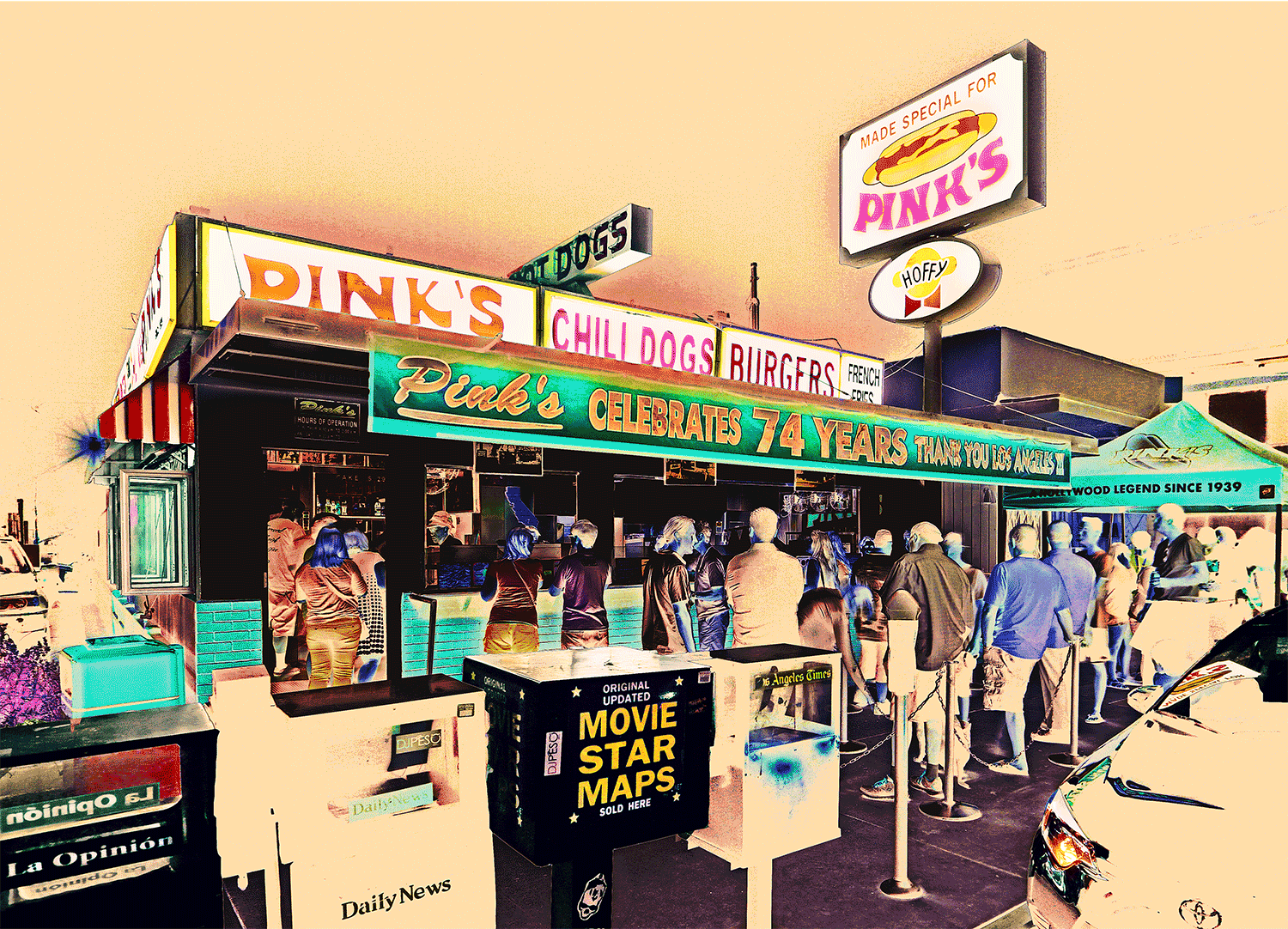
Life on Earth is ephemeral, but art has the power to transcend time. What do you wish to be your artistic legacy?
LT + CR: We never gave it much thought, aside from hoping our children and theirs learn about freedom of thought and expression. But if we had to guess, we would say that our legacy is in the act of bringing lenticular into the 21st century by keeping an esoteric art form moving and reaching its potential. We make art for ourselves and are honored and humbled when people enjoy the gifts we make for one another.
Hopefully, all of our photographic work will stick around one way or another. We can envision a story about our legacy interpolated by someone else; to be posthumously discovered… in a dust-layered attic, smelling of deja vu and hot cardboard boxes decaying along with the contents of a deserted past…
Anyway, lenticular is an extension of photography into other mediums and dimensions. We never stop being photographers. We like to think we have a certain amount of honesty in our photographs. Throughout the 90s, we were photographing all sorts of icons and rising celebrities in music and sports. But we never thought of it this way. We try to find the subject in the photograph itself, without instilling any prior assumptions about a particular persona or identity. Realizing this kind of intimacy with personalities that seem otherwise out of reach is something we hope can continue through the work of other artists/photographers in the future. Of course, we also hope that our gallery forms a kind of crystal of our legacy.
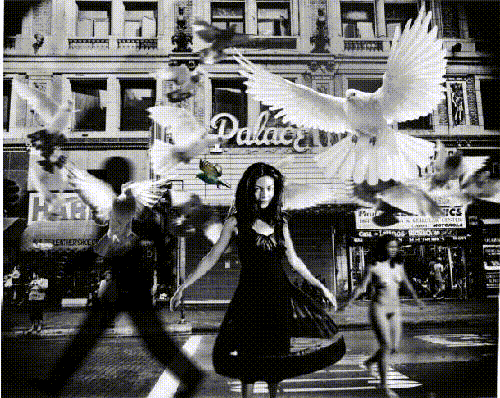
|
|

